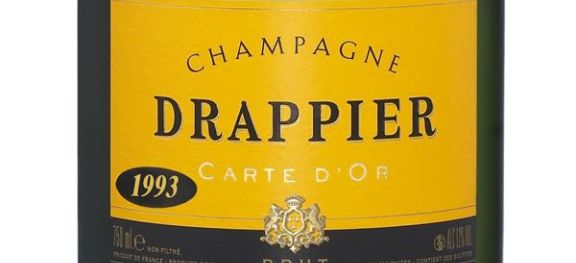Two great champagnes

From €54.09, £55 in bond, HK$880, AU$208 for the Drappier and €54, £61.50, HK$565, 75 Swiss francs, NZ$125, 595 Danish krone, 10,800 yen, Sing$135, AU$135, $113.34, 4,410 Taiwan dollars and 12,132 roubles for the Pol Roger
When we were in Hong Kong recently we joined something known as the LLL group, the initials standing for Long Liquid Lunch. The idea was that each of its members brought along suitable bottles to serve blind to the others.
One of the most impressive wines to be served in the private dining room of Duddell’s was the more thrilling of two champagnes served blind (the other was Veuve Clicquot 1990). Drappier, Carte d’Or 1993 Champagne came as the most delightful contrast to the wave of sometimes austere Extra Bruts and Zéro Dosages being produced by so many of the Champagne growers at the moment. The wine was deep gold with a thrillingly savoury but not drying nose and so much intensity on the palate that it had that lovely throat-warming quality I associate with thoroughly satisfying champagne.
Carte d’Or is the name of Drappier’s regular non-vintage release but this wine is quite different. It was a special late-release wine not disgorged until 2013 and available in pitifully small quantities, I’m afraid, as part of their old-vintage series known as Oenothèque (presumably part of the reason Dom Pérignon decided to adopt a new name, P2 and P3 , for their late releases). According to wine-searcher.com it’s available only in London (£55 a bottle in bond), Hong Kong, Australia, and Prague, where it is only €54.09. There is none left in the cellars of Drappier themselves – now in both Urville and Reims.
Drappier is a very unusual champagne house: they are based in the Aube and the family were some of the prime movers in the introduction of Pinot Noir into this southern satellaite region. They were also one of the first to make a major play for a single-vineyard champagne (in this case their Grande Sendrée from the Aube), although their wines are not necessarily 100% Aube nowadays. They also led the way to a dramatic reduction in sulphur levels, and were relatively early to cite the disgorgement date on their back labels. This blend is mainly Pinot Noir with 7% Chardonnay and 3% Pinot Meunier and has a dosage of just 7 g/l, the liqueur d'expédition having been aged for 15 years in oak.
Another fine champagne I have enjoyed recently should be much easier to find. Like all Pol Roger champagnes, Pol Roger Blanc de Blancs 2008 Champagne is far from taut and super-dry (dosage 8 g/l), but the all-Chardonnay nature of the style imbues this assertive wine with real freshness and line and more than a hint of lemon syllabub about it. This blend of wines from Oiry, Chouilly, Cramant, Avize and Oger would make a great champagne to serve with or without food, whereas the much older, more complex Drappier deserves a bit of attention.
This current-release Pol Roger champagne is widely available, throughout Europe, with many a retailer in Hong Kong – even Lithuania, the Philippines and New Caledonia. Forgive the somewhat extravagant (though by no means overpriced) nature of today's suggestions, but I have some celebrating to do.
Become a member to view this article and thousands more!
- 15,427 featured articles
- 273,891 wine reviews
- Maps from The World Atlas of Wine, 8th edition (RRP £50)
- The Oxford Companion to Wine, 5th edition (RRP £50)
- Members’ forum
- 15,427 featured articles
- 273,891 wine reviews
- Maps from The World Atlas of Wine, 8th edition (RRP £50)
- The Oxford Companion to Wine, 5th edition (RRP £50)
- Members’ forum
- Commercial use of our Tasting Notes
